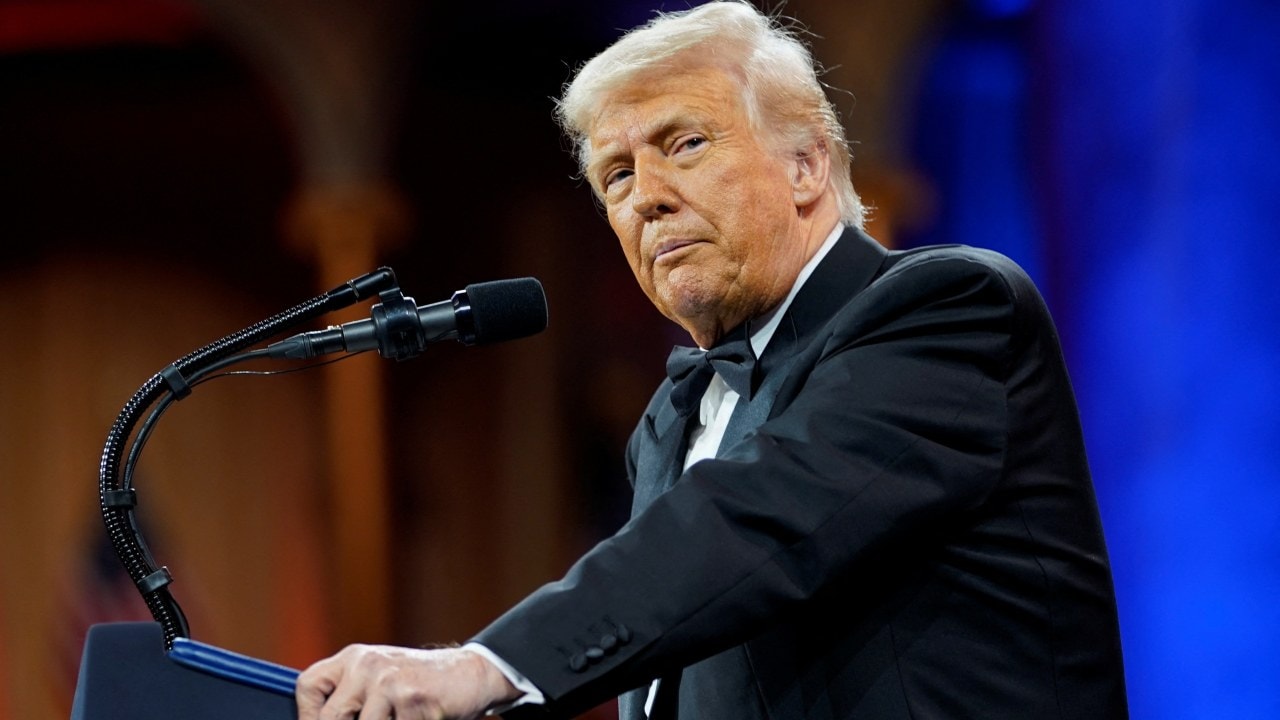The U.S. stock markets enjoyed a broad rally on Wednesday, with the jumping nearly 2% a day after U.
S. President Donald Trump announced that China tariffs will come down substantially, with another potential boost coming from a Wednesday Reuters report citing unnamed sources as saying talks to lead to significant tariff reductions. “ ,” Trump on Tuesday, echoing earlier remarks by U.

S. Treasury Secretary Scott Bessent. Less than a day later, reports emerged that the administration is considering reducing tariffs on Chinese imports from to as low as 50% if talks with Beijing are successful.
But while the stock markets are enjoying a reprieve, are not. On Wednesday at 2:25 p.m.
ET, Brent crude for June delivery was down 2.2%, only recouping a few tenths of a percentage point on the tariff optimism. In a Tuesday report, commodity analysts at Standard Chartered warned that the ongoing tariff snafu has unsettled oil markets, creating negativity about demand prospects and weighing heavily on oil market sentiment.
Volatility in oil markets has spiked, with the 30-day realized annualised front-month volatility clocking in at 42.8% at settlement on 21 April, over 23 ppt higher than at the start of April and just 1.7 ppt below a 30-month high.
StanChart has predicted oil markets could see a short-covering rally, noting there’s been record net-selling across the four main Brent and WTI contracts following the 2 April announcement of U.S. tariffs.
The ICE Brent positioning index fell 28.9 w/w to -40.3 while the NYMEX WTI positioning index rose 21.
0 w/w to -79.0. StanChart says the overall change was largely due to the closing out of longs rather than the opening of new shorts, with longs across the four contracts falling by 26.
3 million barrels (mb), while shorts increased by 5.8 million barrels. Further, StanChart says oil markets appear to have ignored the latest [bullish] move by OPEC+.
A week ago, Saudi Arabia, Russia, Iraq, the United Arab Emirates, Kuwait, Kazakhstan, Algeria, and Oman submitted their individual compensation plans to OPEC, potentially cutting the amount of extra barrels they will bring to the markets during their ongoing unwinding of cuts. The latest requires the seven nations to cut output by a further 369,000 barrels per day each month starting April 2025 now to June 2026. Under the new plan, monthly cuts will range from 196,000 bpd to 520,000 bpd from April until June 2026, up from 189,000 bpd to 435,000 bpd previously.
But threw another spanner in the works, saying it would prioritize national interest, not OPEC quotas, and pump at will. Additionally, on Wednesday, reported that ?OPEC+ is considering accelerating oil output increases for June, following a significant 411,000 barrels per day (bpd) hike in May, which was three times higher than initially planned. The decision to boost production in May was influenced by a sharp decline in oil prices to a four-year low, driven by factors such as the U.
S.-China trade war and concerns over compliance within the group. Saudi Arabia, in particular, advocated for the increased output to address perceived non-compliance by countries like Kazakhstan and Iraq.
However, Kazakhstan has stated it will prioritize its national interests, indicating it may not adhere strictly to OPEC+ quotas. A meeting involving eight OPEC+ countries is scheduled for May 5 to finalize the output plan for June. Market reactions have been mixed, with Brent crude oil prices fluctuating in response to these developments.
Previously, eight OPEC+ nations to advance their planned phase-out of voluntary oil output cuts by ramping up output by 411,000 barrels per day in May--equivalent to three monthly increments. The announcement of the accelerated unwinding clip came at a time when U.S.
President Donald Trump announced tariffs on trading partners, deepening the shock to oil markets. The move confirmed previous rumors that Saudi Arabia could be willing to abandon its traditional role as OPEC’s swing producer as it looks to make a strong statement against production cut violators such as Kazakhstan, United Arab Emirates and Iraq. Last September, the Financial Times that Saudi Arabia was ready to abandon its unofficial price target of $100 a barrel for crude oil as it prepares to increase output, effectively signaling that it is resigned to a prolonged period of lower oil prices.
Saudi Arabia currently accounts for 2 mb/d out of 2.8 mb/d output cuts from OPEC members and a total of 3.15 from OPEC+.
Essentially, the Saudi contribution is double that of the entire group, with only the Kingdom and Kuwait currently cutting production by a double-digit percentage. In fact, a big part of lower output by other OPEC+ members is not voluntary but rather reflects their inability to meet their quotas. Kazakhstan, in particular, has repeatedly exceeded its OPEC+ output quota of 1.
468 million bpd. Kazakhstan has oil production, with the country’s crude oil and gas condensate--a type of light oil- output hitting a record high of 2.12 million barrels per day in February, good for a 13% increase from January.
Excluding gas condensate, crude oil production increased 15.5% m-o-m to 1.83 million bpd.
The OPEC+ member has been able to increase oil output despite damage to the Caspian Pipeline Consortium (CPC), its main export route via Russia. Back in February, Russia that CPC capacity was cut by 30-40% after an attack by Ukrainian drones. It’s not clear how Kazakhstan has managed to ramp up output despite having constrained export capacity.
?azakhstan relies on the CPC for more than 80% of its exports. The surge in output follows a rise in production at the giant Tengiz oilfield, operated by Tengizchevroil, led by (NYSE:CVX), which has embarked on a expansion of Tengiz. By Alex Kimani for Oilprice.
com.
Business

Crude Caught in Crossfire of OPEC+ Discord and Tariff Shocks

The U.S. stock markets enjoyed a broad rally on Wednesday, with the S&P 500 jumping nearly 2% a day after U.S. President Donald Trump announced that China tariffs will come down substantially, with another potential boost coming from a Wednesday Reuters report citing unnamed sources as saying talks to lead to significant tariff reductions. “It will come down substantially, but it won’t be zero,” Trump said on Tuesday, echoing earlier remarks by U.S. Treasury Secretary Scott Bessent. Less than a day later, reports emerged...















